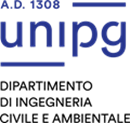Study-unit CHEMISTRY
| Course name | Building engineering and architecture |
|---|---|
| Study-unit Code | GP004884 |
| Curriculum | Comune a tutti i curricula |
| Lecturer | Marzio Rosi |
| Lecturers |
|
| Hours |
|
| CFU | 5 |
| Course Regulation | Coorte 2019 |
| Supplied | 2019/20 |
| Supplied other course regulation | |
| Learning activities | Affine/integrativa |
| Area | Attività formative affini o integrative |
| Sector | CHIM/07 |
| Type of study-unit | Obbligatorio (Required) |
| Type of learning activities | Attività formativa monodisciplinare |
| Language of instruction | Italian |
| Contents | Atomic theory. Properties of the gases. Thermodynamics. Phase equilibria and solutions. Chemical equilibrium. Equilibria in solution. Electrochemistry. Kinetics. Atomic and molecular structure. Chemical bonding. |
| Reference texts | David W. Oxtoby, H. P. Gillis & Laurie J. Butler, Chimica Moderna, EdiSES, Napoli, 2018, V edizione. |
| Educational objectives | Basic knowledge of general chemistry. Acquisition of the bases for the understanding of chemical phenomena relevant for technologies and, in particular, those related to the interactions between human activity and the environment. Acquisition of the knowledge necessary to evaluate the effects of the use of technologies and to know how to protect the environment. |
| Prerequisites | Knowledge of mathematics acquired in secondary school: Algebraic equations of first and second degree, systems of linear equations, inequalities, powers and logarithms, trigonometric functions, use of graphics and percentages, derivatives and integrals. |
| Teaching methods | Face-to-face lessons and practical training |
| Other information | There are eight exam sessions in the following periods: January 2020; February 2020; April 2020; June 2020 (2 dates); July 2020; September 2020; November 2020. The dates can be found in the following site http://www.ing1.unipg.it/ |
| Learning verification modality | The exam consists of a written test lasting 90 minutes. The test implies 20 answers to numerical problems and theoretical questions. Each correct answer gains 1.5 points; no points for a wrong answer or no answer. The written test is followed by an oral examination, which consists mainly in a discussion of the written test e in some questions on the atomic structure and the chemical bonding. During the test it is possible to check books and student's notes. For information relative to students with disabilities or specific learning disorders see the WEB page http://www.unipg.it/disabilita-e-dsa chemical bonding. |
| Extended program | Atomic theory of Dalton. Molecular Mass. Mole. Avogadro's number. Atomic structure. Chemical equations. Empirical and molecular formulas. Properties of the gases. Ideal gases. Temperature. Dalton's law. Kinetic theory of the gases. Kinetic energy and temperature. Distribution of the molecular rates. Effusion and diffusion. Real gases. Thermodynamics. Work and heat. First law. Specific heats. Enthalpy. Thermochemistry. Second law. Entropy. Third law. Free energy and equilibrium. Phase equilibria and solutions. Clapeyron equation. Phase diagrams. Ideal solutions. Units of concentration. Colligative properties. Chemical equilibrium. Equilibrium constants. Van't Hoff equation. Equilibria in solutions. Acids and bases. pH. Salts. Electrochemistry. Electrolysis. Batteries. Standard potentials. Kinetics. Arrhenius law. Catalysis. Atomic and molecular structure. Chemical bonding. |


